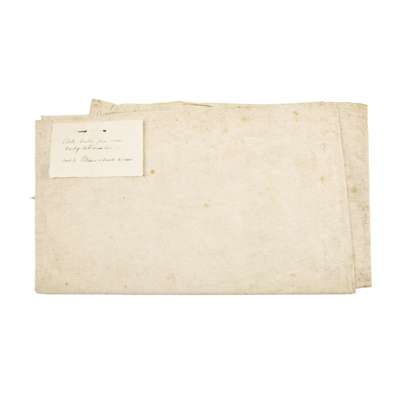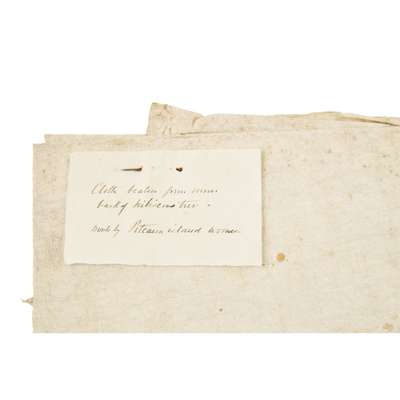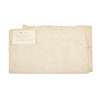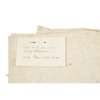
Lot 532

LARGE LENGTH OF TAPA CLOTH FROM PITCAIRN ISLAND
19TH CENTURY








Auction: Day 2 - Thurs 15th May from 10am | Lots 314 to 602
Description
folded with an old handwritten note pinned to it reading ‘Cloth beaten from vines, bark of hibiscus tree, Made by Pitcairn island women’
Dimensions
40cm long [folded]
Provenance
Purchased circa 2010 by the current owner from the sale of contents of a Fife property including items and papers relating to Alexander Woodcock (1822-c1899), a prominent lawyer based in St. Andrews.
Footnote
The modern Pitcairn Islanders are descended mostly from nine British HMAV Bounty mutineers and twelve Tahitian women that chose to settle on the island in 1790. The colony of mutineers were not visited again until 1808 and then more increasingly until they were taken under the protection of England in late 1838. When contact was again established with the outside world, the inhabitants of Pitcairn were wearing Polynesian-style clothing made from the bark of the paper mulberry tree, which grew on the island. Victorian Britain, and Queen Victoria herself, were fascinated by the lore of the uncontacted island society of the mutineers, with books and relics of the island gathering great interest. Lord Byron in 'The Island' has made the mutiny of the Bounty the basis of a tale, but the facts are much distorted. For a full history of Pitcairn Island, see this Pitcairn Island Study Centre article [https://library.puc.edu/pitcairn/pitcairn/history.shtml].
A small section of Pitcairn tapa cloth is in the collection of National Maritime Museum, Greenwich, London. Collected by officer Richard Thompson Esqre. R.N. Master of H.M.S. Imogene on the 9th December 1836 (Object ID ZBA0807)







